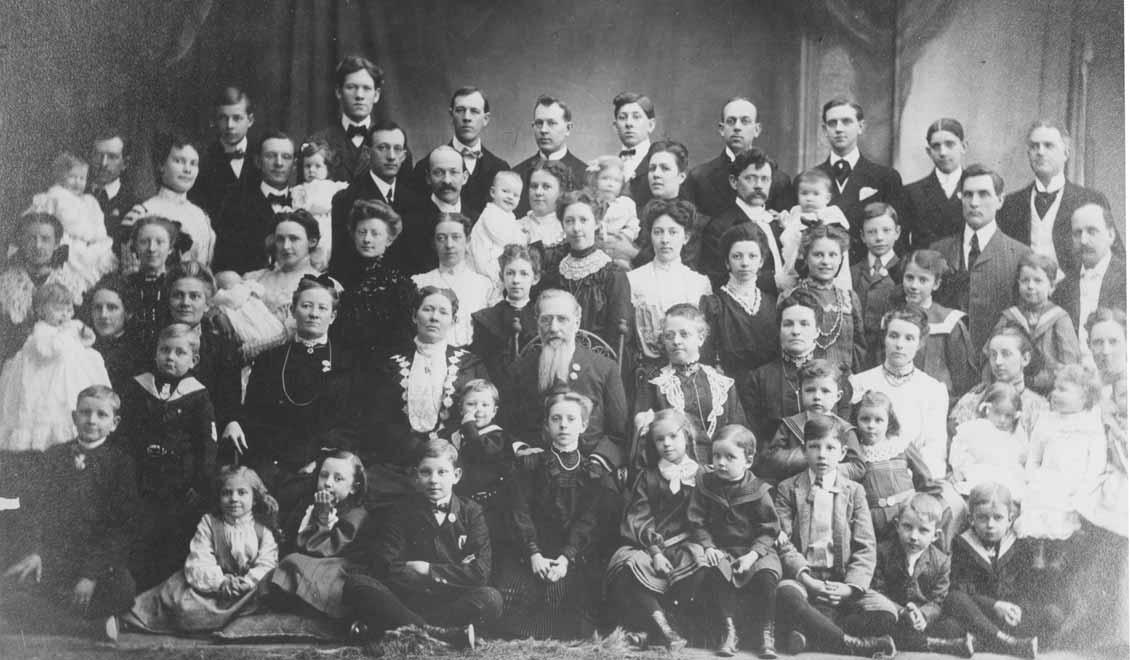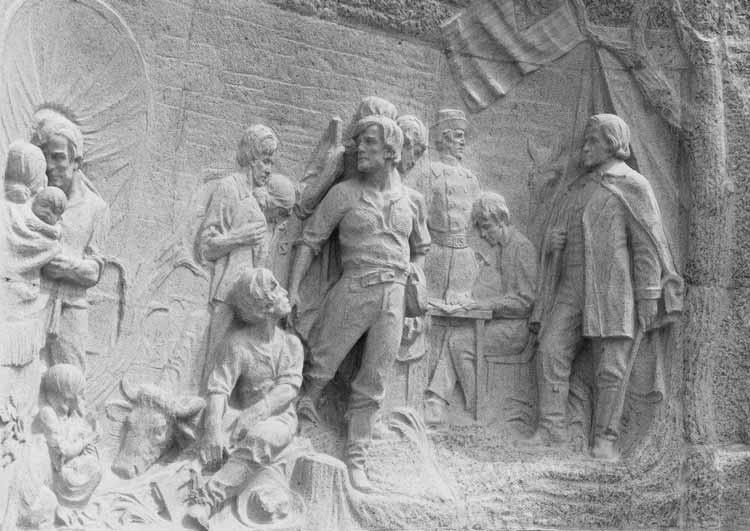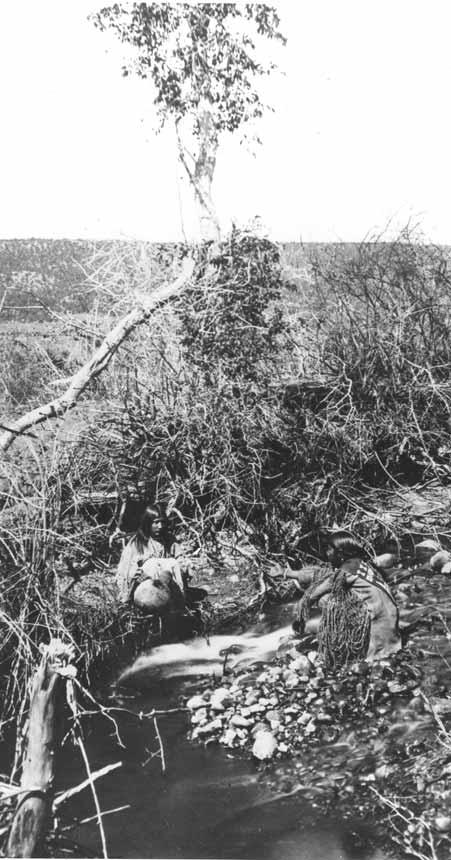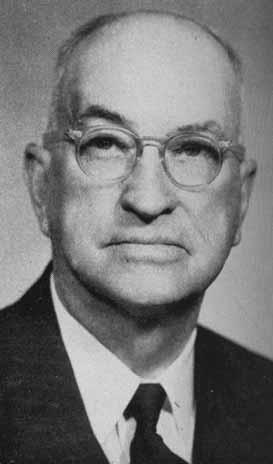
19 minute read
Book Reviews
The Collected Leonard J.Arrington Mormon History Lectures Special Collections and Archives,Utah State University Libraries.
(Logan:Utah State University Press,2005. ix + 283 pp.Cloth,$29.95.)
BELOVED MORMON HISTORIAN Leonard J.Arrington donated his papers to Utah State University and proposed that the university initiate an annual lecture on Mormon history.The university responded by naming a lecture series for him and asking Arrington to deliver the first one.The resulting lectures,from 1995 through 2004,are collected in this attractively produced and illustrated volume.The authors form a constellation of scholars:Arrington,Richard Lyman Bushman,Richard E.Bennett,Howard R.Lamar,Claudia L.Bushman,Kenneth W.Godfrey,Jan Shipps,Donald Worster,Laurel Thatcher Ulrich,and F.Ross Peterson.
Perhaps least compelling in the collection is Arrington’s own lecture on the need for Latter-day Saints to combine faith with intellect.He presents five examples:Joseph Smith,Eliza Snow,Brigham Young,George Q.Cannon,and Emmeline Wells.Arrington stretches his thesis particularly for Smith and Young and,in the end,reveals more about himself than his subjects.
Richard Bushman lucidly explains Joseph Smith’s concept of the City of Zion as a place of gathering,an organized living space,and a spiritual center.He compares Smith’s plan with New England villages,Philadelphia,and particularly Chicago,the latter also a city of gathering,but for commercial rather than religious purposes.
Richard Bennett considers how members of the original 1847 Mormon exodus understood their purpose.Examining their experience in Zion’s Camp in 1834,Brigham Young’s January 1847 revelation,and the sermons preached along the way,Bennett shows they believed that they were on a divine mission which demanded obedience for success.
Howard Lamar reviews the Mormons’abiding interest in theater.He points out,among other things,that several Utah politicians were also actors,that the theater indicates joy in everyday life,and that women on stage were respected.
Claudia Bushman gently follows the footsteps of Elizabeth Kane,whose husband Thomas had interceded for the Mormons on several occasions,notably during the Utah War.The Kanes came to Utah in 1872-73 for Thomas’s health and Elizabeth visited several Mormon homes while traveling to St.George.Moving from disgust for polygamy to respect for the women she met,Elizabeth’s account provides insights into Mormon lives of that period.
Kenneth Godfrey in what is the lengthiest paper of the collection emphasizes the critical centrality of the temple during the Nauvoo period.Godfrey’s lecture, however,would have benefited from fewer discursions into peripheral subjects and a less apologetic style.
Jan Shipps amusingly recounts her personal introduction to Mormon ways and then elucidates verbal and cultural identifiers of being a Latter-day Saint.She shows that some serve as marks of faithfulness for outsiders and others for insiders and that all have changed over time.
Donald Worster,in a fascinating lecture,describes the Mormon influence on the views of John Wesley Powell and John Muir regarding the ideal relationship between humans and the environment in the West.The surprising ideas of both men are mostly unknown today,but still ring with relevance.
Laurel Thatcher Ulrich,as in her other works,points us to new ways to consider history,this time when memory and fact conflict.Her study of the Thatcher family letters from the 1870s give a very different picture of the trials endured by women in polygamy than Elizabeth Kane’s account described by Claudia Bushman.
Ross Peterson’s research into family traditions and historical documents reveals the sad story of his grandparents’disastrous marriage.He raises questions about the disruption of the post-Manifesto period on the lives of believers and about writing history even when it is not uplifting.
I recommend this volume not only for the broad variety of subjects covered, but also for the fresh and uncommon ways the authors look at Mormon history.
POLLY AIRD Seattle, Washington
Art of the Warriors:Rock Art of the American Plains
By James D.Keyser. (Salt Lake City:University of Utah Press,2004.128 pp.Cloth,$45.00.)
BECAUSE PLAINS ROCK ART is second in North America only to Southwest rock art in terms of content diversity,complexity,and richness,it is fitting that it be recognized in a large format,beautifully illustrated and enlightening book. Rock art of the Plains spans a long time period,from about five thousand years ago to 1924 when the last petroglyph was created on the Plains.Rather than a strict scientific treatment of the subject,the book is a series of essays.
Chapter One,“The North American Plains,”introduces the study of Plains rock art in the essay “Sahkomaupee and the Big Dogs.”Although a great variety of Plains rock art was made over the years the great majority was produced by warriors.Some may judge the term “warriors”to be politically incorrect as it has violent connotations.However,Keyser describes warriors as “men of courage and skill who sought powerful spirit helpers to assist them in their lives and who paid homage to those spirits by recording their deeds performed in fighting and horse raiding”a broader but perhaps more romanticized definition (10-11).
“The Land of the Warrior Artists—‘Big Sky Country’”provides the geographic setting for the book and the rock art.The Great Plains covers a large area of the United States,almost the central third of the country,which stretches from Canada to Texas.
“People of the Plains”sets Plains cultures in time,and describes common cultural traits of both hunters and farmers.The Plains cultures that exploited the vast herds of bison are well known.However,the description of village farmers may be new information to some readers.
“Plains Indian Rock Art,”chapter two,covers classifying and dating warrior art, and the traditions of Plains rock art.The concept of describing rock art traditions instead of styles is intriguing.A “tradition”in archaeology is an organizational unit, which describes a set of shared traits that include subject matter,motifs,and relationships within the composition,techniques of production,and occasionally the greater landscape setting of the site.Sixteen traditions are described,with names as rich as the art:Dinwoody,Hoofprint Tradition,Ceremonial Tradition,and Robe and Ledger Art Tradition.It should be clarified that the author includes in this study images on tanned hide and paper executed during the historic period.
The third chapter is “Understanding Plains Rock Art.”The first essay, “Ethnography and the Direct Historical Approach,”reminds us that the people of the Plains did not disappear.Rock art was a living tradition for many groups through the historic period.A compelling aspect of the book is the inclusion of historical records and rich first person accounts of Plains people discussing their art in their own words.
The final essay,“Plains Warrior Art:a Humanistic Archaeology,”reminds us that archaeology is,after all,the study of past humankind.Keyser believes that studying Plains rock art,more than any other artifact,reveals much to us about “how its makers had thought,worshipped,conducted their rituals or ceremonies,or felt about their place in the world ...rock art is one of the few artifacts whose entire form,structure,and location depends solely on the mind of its maker following the organizational rules of his culture”(110-11).
Finally,a book written for the public and highlighting with quality photographs the rich,expansive traditions of Plains rock art.This book deserves a place in the library of every rock art aficionado as well as those willing to disturb preconceived notions of stereotypical Plains Indians.
PAM MILLER College of Eastern Utah Prehistoric Museum
Custer and Me: A Historian’s Memoir
By Robert Utley.(Norman:University of Oklahoma Press,2004.xii +253 pp.Cloth,$37.95.)
UNLIKE MANY OF HIS COLLEAGUES,historian Robert Utley is known to thousands of people.In airports all around the nation,people stopped him to inform him that he is “the guy from the History Channel.”The name,the face, and the voice of Robert Utley have all become synonymous with the history of the American West and American Indians.Utley’s histories jump from the page and demand attention.No person has defined Utley’s life like George A.Custer, and with him in mind Utley turned his attention inward.The skill of the novelist and a dogged obsession with evidence combined to form the career of this esteemed historian.
However,a word of caution must be issued to those interested in the influences that shape any historian not just those of Utley’s caliber.A historical memoir is usually written by a professional at the end of his/her career and provides a platform to air past grievances and current perceptions of the historical profession. Such a work allows historians to reflect on their career ups and downs,and choices made.Most importantly,the memoir provides a platform to discuss important issues that affected their abilities as professionals whether inside or outside of the academy.
In this work,Robert Utley negotiates all these terrains while showcasing the importance of remaining open to new experiences even if they seem to divert from the professional path.From an early age Utley was fascinated,some may say obsessed,with Custer.Utley’s first Custer experience came from Hollywood.Errol Flynn’s 1942 portrayal of Custer in They Died with Their Boots On launched a career that would span more than five decades and produce some of the seminal works in the history of the American West.Utley’s career began on the very field where Custer’s ended,at the Little Bighorn.Utley worked for six years as an interpreter for the National Park Service charged with explaining to thousands of visitors the significance of that historic site.
Interpretation beneath the Montana sun was just the start of Utley’s National Park Service career.After a stint in the armed forces Utley became a Joint Chiefs of Staff historian and later returned to work as an historian with the Park Service. Working his way through the ranks in places as diverse as Santa Fe,New Mexico, and Washington D.C.,Utley honed his historical skills and became an effective advocate for more efficient park management.In his discussions of his Park Service years,Utley provides insight into numerous presidential administrations, including some special insights into Richard M.Nixon and the Watergate affair. Utley also examines the struggles over the interpretation of our national parks. The question of “symbolic ownership”plagued the Little Bighorn Battlefield. Utley has been at the forefront of this debate since it began.As a Park Service administrator,Utley became involved with a group determined to elevate the position of Western history within academic circles.Long desiring to keep one foot in the private sector and the other in the academy,Utley seized the opportunity and helped establish the Western History Association.
Although Utley’s memoir is an introspective examination of the state of the profession,particularly the changing dynamics in the fields of American Indian and Western history,this reader found some of his reminisces more self-important than analytical.One problem with any memoir is self-indulgence,and even an author such as Utley is not immune.However,with such a long and voluminous career,a little authorial excess is forgiven.
TODD LEAHY College of Eastern Utah
Gold Rush Saints:California Mormons and the Great Rush for Riches
By Kenneth N.Owens,Vol.7of Kingdom in the West:The Mormons and the American Frontier series.(Spokane,Washington:The Arthur H.Clark Company,2004.396 pp. $39.50.)
UTAH LATTER-DAY SAINTS played a visible role in America’s mid-nineteenth-century attraction to gold:Sam Brannan was a promoter of the find (for his own reasons) while lesser figures like Henry Bigler and Azariah Smith (both Mormon Battalion veterans) were eyewitnesses at Sutter’s Mill on January 24,1848,when James W.Marshall’s earth-shattering discovery was made.Other Latter-day Saints,like Isaac Leigh,Thomas Blackburn,and Zadock Judd,dot the pages of Gold Rush Saints. These Mexican War veterans proudly referred to themselves as “battalion boys”(57).As series editor,Will Bagley observes in the book’s forward,Kenneth N.Owens “brings his expertise [in California and Western history] to the neglected legacy of the gold rush Saints”(11).
Gold Rush Saints begs the question:“Where did Brigham Young initially intend to settle the beleaguered Saints,California or today’s Utah?”Owens presents, intentionally or not,a strong argument vis-à-vis correspondence between Young and Brannan,which could lead one to conclude that the Pacific Coast was Brigham’s original destination.This seems to challenge later official interpretations that portray Sam Brannan as going to San Francisco on his own initiative.For example,Young wrote Brannan in September 1845,“I wish you together with your...paper and ten thousand of the brethren were now in California at the Bay of San Francisco [and] we will meet you there”(32).Acting on these directions, Brannan proceeded to establish a Latter-day Saint community in northern California.He must have been at a loss when,in July 1847,Young told him:“We have no business in San Francisco;the Gentiles will be there pretty soon”(51).
William Glover,who sailed with Sam Brannan on the Brooklyn, wrote in his 1884 recollections of the Brooklyn colonists’efforts to erect a permanent settlement at San Francisco Bay.Owens describes Grover’s recollections as “faith promoting literature”by a man of “religious devotion and sense of mission”(35).It seems clear that Glover and his fellow Mormons believed that they were preparing the way for a future LDS stay in the region.
James S.Brown’s 1894 writings observed how “experimentation characterized the earliest days of placer mining in Northern California”(127).The providential find by Marshall at Coloma,launching the ensuing gold rush,was an historic anomaly.The experiences of most Mormon (and non-Mormon) miners were akin to those of Henry Bigler,who while freelancing,on a day off from working for Sutter/Marshall,“waded the river [but] the water was almost as cold as ice itself.” Becoming so ”benumbed with cold”he could not light a fire,he was compelled to “dance,run,and jump over the rocks”until his body warmed up (115).
While this volume focuses “primarily”upon the experiences of the California Saints,the editor finds that the narratives “illuminate”the thorny ordeals and opportunities which the gold rush posed for the Mormon colony in the Great Basin.Ambivalence marked the Latter-day Saint role from the outset.Brigham Young feared that the Babylon of the gold fields would prove to be a refuge for the “disaffected and the dissolute”(13).But the battalion boys generally proved him wrong.Sam Brannan is remembered for succumbing to California’s allure, while few,if any of Owens’s gold rush Saints deserted Young’s Zion for the riches and temperate climate of the Pacific shore.
With this volume,Kenneth N.Owens adds his name,with those of Will Bagley, David L Bigler and Norma Baldwin Ricketts to the most important current historians of the LDS experience in nineteenth-century California.
M. GUY BISHOP Woods Cross
Building the “Goodly Fellowship of Faith”:A History of the Episcopal Church in Utah, 1867-1996
By Frederick Quinn.(Logan:Utah State University Press,2004. xxii + 324 pp.Cloth,$24.95.)
ALL TOO FREQUENTLY,detailed chronicles by ecclesiastical historiographers leave the impression that church history is nothing more than recounting who served on various boards and agencies and who made the first motion at congregational meetings.Fortunately,Quinn’s narrative belongs to a completely different genre of historical writing.Based on extensive use of primary and secondary sources and organized chronologically around the tenure of Utah’s bishops,Quinn provides readers with a comprehensive,candid,insightful,and exceptionally wellwritten account of the growth and development of the Episcopal Church in Utah. Because of the author’s analytical skills and his concerted efforts to place local events into the larger framework of state and national issues,this book will be of interest to a wide range of readers,including religious,social,and regional historians as well as laypeople and clergy from various denominational backgrounds.
Beginning in 1867 with the ministerial career of Daniel S.Tuttle,the first permanent prominent Protestant missionary to settle in Salt Lake City,Quinn traces the impact of a succession of Episcopal bishops on the evolution of a minority denomi- nation in the context of LDS hegemony.Unlike their Presbyterian and Methodist counterparts in Utah,Episcopalians eschewed adversarial relationships with Latterday Saints, preferring to acknowledge theological differences while concurrently seeking avenues of cooperation with the dominant religious community.
One of the most appealing features of the narrative is the author’s ability to humanize the Episcopal bishops and their co-workers by extensive use of personal correspondence,inter-office reports,and observations of colleagues and parishioners. As a result,rather than appearing as one-dimensional church bureaucrats,the leaders are portrayed as having distinct personalities,unique operating styles,and varying degrees of success in accomplishing their goals.Discussion of their personal problems such as alcoholism,homosexuality,and divorce,enhances rather than diminishes their stature as human beings seeking to fulfill ministries in the midst of real-life situations. Most intriguing to this reviewer were the involvement of Episcopal bishops in controversial social,political,and economic issues and their commitment to improving educational and medical services in Salt Lake City and beyond.
Although the history focuses on the primary role of bishops in shaping church structures,programs,and worship practices,it also describes intercultural ministries to Native Americans and features the contributions of women clergy and laypeople.Accounts of the formation of new congregations in the twentieth century provide valuable information about how Episcopalians organized in communities beyond the confines of Salt Lake City.The narrative concludes with a succinct “summing up”that provides the reader with the author’s main conclusions about the history of the Episcopal Church in Utah.
An accomplished writer,Quinn has a knack of capturing the reader’s attention with colorful analogies and the use of apt quotations.For example,describing the episcopate of Abiel Leonard,which was bracketed between the more highly visible terms of Daniel S.Tuttle and Franklin Spencer Spalding,Quinn comments that Leonard’s role “was like appearing in the batting order between Lou Gehrig and Babe Ruth”(31).Quinn also relates how another bishop presided over long and tedious committee meetings.A colleague recalled,“He had an ass of stone, because he could sit in meetings forever”(221).
Having perused many institutional histories during a forty-year academic career,I can say that this is one of the very few that I have read from cover to cover with sustained interest and considerable profit.
R. DOUGLAS BRACKENRIDGE Trinity University San Antonio, Texas
We Refused to Die:My Time as a Prisoner of War in Bataan and Japan, 1942-1945
By Gene S.Jacobsen,Illustrations by Benjamin Charles Steele. (Salt Lake City:University of Utah Press,2004.x + 273 pp,Cloth,$24.95.)
ON THE HEELS of such important works as Ghost Soldiers,the book, We Refused to Die, by Gene Jacobsen takes the reader on a poignant and deeply personal journey into the horrors of the Bataan Death March.While other March survivors have written of the sufferings endured during World War II,this volume is unusual because the memoirs which inspired this work were created by the author just months after his liberation from Japan in the fall of 1945.
Jacobsen’s account covers the entirety of his experience,from the battle for the Bataan Peninsula,through the March and the subsequent three and one-half years of slavery in various prison camps in the Philippines and Japan.Through it all, Jacobsen provides vivid and impressive detail not only about his experiences,but also about those of his fellow prisoners—much of it in quoted dialogue.Jacobsen’s intimate portrayal of life and death is both riveting and heartrending.Credit for this fine volume is also extended to the illustrator of the book,fellow prisoner Benjamin Charles Steele,who provides another important view of the ordeal through his artwork.
We Refused to Die is an emotionally difficult book to read as it delivers an unvarnished account of man’s inhumanity towards man in times of war.Readers of this volume will come away changed by this riveting portrayal of the evils experienced by the prisoners.Jacobson shares profound insights into the daily life endured by the captives.For example,he describes the lengths to which his fellow inmates would go to avoid the slave labor imposed upon them as their bodies moved closer and closer to death.He relates how one prisoner would ask another to inflict a serious injury such as a broken arm,which would render the first disabled and no longer able to labor in the pitiful conditions of the coal mines.The inhumanity of their capturers,the extreme conditions of their captivity,and the daily struggle to hold on to life are all portrayed in penetrating detail.
One powerful perspective shared by the author is that he and many of his associates were convinced that if they survived the war,they would be scorned at home because of their surrender at the beginning of the war.The prisoners came to have this belief in consequence of the incessant indoctrination by their capturers that they were cowards.Of course,in the end,they were appropriately heralded as heroes.
Perhaps the most moving part of Jacobsen’s story comes at its conclusion as he extends forgiveness to his vicious tormentors. For Jacobsen, liberation from his horrible ordeal is both of the body and of the mind. He returns home to marry a childhood sweetheart and resumes a life of normalcy, never forgetting that the majority of his fellow sufferers knew no such homecoming. Through this poignant ,piercing account the reader comes to realize that the Bataan Death March soldier epitomizes why the World War II generation of soldiers is remembered as the greatest.
ROBERT C. FREEMAN Brigham Young University
Walking on Sand:The Story of an Immigrant Son and the Forgotten Art of Public Service
By Rocco C.Siciliano with Drew M.Ross.(Salt Lake City:University of Utah Press,2004.xii + 324 pp.Cloth,$25.00.)
FIRST A DISCLAIMER:in the early pages,the reviewer discovered he has a dotted line kinship to the author.I delivered French bread and dinner rolls to his father’s restaurant,The Capri,in downtown Salt Lake City in the early 1950s.I was employed as a delivery boy for a Greek purveyor of pastries,The Liberty Bell Bakery.
An unabashed champion of public service and the public sector workforce, Rocco Siciliano proffers insights,advice and forecasts in Walking on Sand.The story of his life’s journey is rewarding due in large part to an uplifting theme woven throughout that one person,humble beginnings notwithstanding,can be a profound influence in the epicenters of politics,business,and the arts.Consider Siciliano’s experiences:serving as special assistant to President Eisenhower for personnel management at age thirty-one;orchestrating the first White House policy meeting of black civil rights leaders with a president of the United States;serving as under secretary of commerce and as assistant secretary of labor;serving on powerful national and California business,industrial and cultural committees whose actions had resounding impacts on public policy,immigration,political reforms and the advancement of the arts;chairing the construction committee of the world’s premier emporium of culture,the J.Paul Getty Center which “played a central role in the evolution of Los Angeles”(249).This volunteer experience was clearly Siciliano’s most rewarding,judging by the upbeat tone of the chapter.
No doubt,Siciliano’s deliberative,forgiving and judicial style and his keen intellect afforded him exceptional career experiences – paid and unpaid.While personally rewarding,these forays almost always had a silent,underlying benefit to a much larger audience – the public sector.
His studious insights into the overwhelming task of the presidency of the United States and on the nation’s immigration trends are particularly thought provoking.They are delivered in a frank,honest,and thorough manner,as is the entire book.Two photo sections provide visual links to the compelling copy.
Born in Salt Lake City the son of Italian immigrants,Siciliano’s determination to succeed was shaped by an early-age desire to “fit in,”a task exacerbated by his Catholic religious beliefs and his name,neither of which fit the mold of Mormon-rich Utah.
Even though he “felt pressure everywhere around”as a youngster,he forged his interpersonal skills in high school and college in his hometown.At Salt Lake City’s South High School he was prominent,popular,and voted as having “the most brains”(42).While he turned down a scholarship to Stanford University (due to lack of confidence),his confidence soared at the University of Utah where he was elected to five student government positions while getting his political science degree and his commission as a second lieutenant in the U.S.Army via the ROTC route.
That foundation nurtured a fascinating odyssey of family,leadership,presidential appointments,management and public service on a grand scale.
The journey—like the volume—wasn’t all on sand.Most was on rock-solid footings.
MIKE C. KOROLOGOS Salt Lake City







